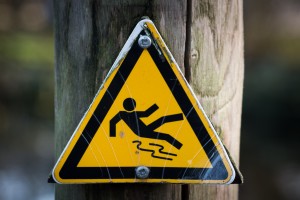Changes to Slip and Fall Accident Timelines
Bill 118, the Act to amend the Occupiers’ Liability Act came into effect December 8, 2020.
Changes to Ontario Law and slip and fall accident timelines will soon affect people who are injured by a slip and fall accident on icy steps, walkways, laneways, or property. Those injured once had up to two years to make a claim against the occupier. That time has now been shortened to 60 days and an additional requirement has been added involving written notice of the claim. Anyone making a claim for a slip and fall on private property that is due to ice and snow must now serve the owner/occupier with written notice of the fall, the time, the date, and the precise location by personal service or by registered mail.
If the incident occurred on municipal property written notice of the fall, the time, the date, and the location must be provided within 10 days by service on the City Clerk or by registered mail. If the person dies from the injuries the time limit for notification does not apply. The court also has discretion under reasonable circumstances to forgive late notice.
Slip and Fall Accidents in Ontario
If a fall occurs on private property the person making the claim must find the legal owner of the property, whether there is a tenant responsible for maintenance, and inquire as to whether there is a property manager, and a snow removal contractor. This information must all be included in the notice of the claim.
“You will want to take photos of the location right away (if possible), and preserve your footwear,” said Ottawa injury lawyer David Hollingsworth.
Bill 118 was put forward by Parry Sound-Muskoka MPP Norm Miller last year because snow removal operators were facing considerable increases in insurance costs following a surge in slip and fall claims made against them.
According to the Insurance Brokers Association of Ontario (IBAO), the increases in slip and fall claims against snow removal companies had led to some insurers limiting the availability of liability coverage to contractors. This meant that some snow removal operators would not be able to get the necessary liability insurance, and therefore would be unable to operate.
Slip and fall accidents happen all the time, and they can happen, so it is important to be careful about where you walk at all times. There are certain times where you are more likely to slip and fall especially during the colder months of the year. Make sure you have footwear and clothing. Any shoes with a good grip will help you to avoid black ice and other slippery situations. Reflective clothing will help to make sure that drivers will give you enough room when passing on slippery and ice-covered roads.
“Slip and fall accidents happen in a split second and are often preventable,” says David Hollingsworth, Ottawa personal injury lawyer. Regular snow removal, ice removal, salting, and sanding can help to provide for a safer condition to walk and play for you and your children in and around your community.
What to do after a slip and fall accident
“If you suffer a slip and fall injury, try to document it as soon as possible,” advises, Ottawa slip and fall attorney. Take pictures with your phone and note where the accident happened and note anything about the buildup of ice and snow that could have caused the accident.
Bill 118 was put forward by Parry Sound-Muskoka MPP Norm Miller last year because snow removal operators were facing considerable increases in insurance costs following a surge in slip and fall claims made against them.
According to the Insurance Brokers Association of Ontario (IBAO), the increases in slip and fall claims against snow removal companies had led to some insurers limiting the availability of liability coverage to contractors. This meant that some snow removal operators would not be able to get the necessary liability insurance, and therefore would be unable to operate.



